



A PLOS Climate update reveals India has warmed by 0.9°C since 1901, leading to intensified Arabian Sea cyclones, rising marine heatwaves, and Himalayan ice loss. Urgent action is needed for adaptation, resilient infrastructure, and climate-smart agriculture to safeguard water security and coastal communities.

Copyright infringement not intended
Picture Courtesy: DOWNTOEARTH
According to the Journal PLOS Climate report, India’s average temperature has risen by nearly 0.9°C in the last decade (2015-2024) compared to the early 20th century (1901-1930)
India is highly vulnerable to the adverse effects of climate change due to its unique geography, vast coastline, dependence on the monsoon, and large population engaged in agriculture.
India ranks 9th in the long-term Global Climate Risk Index (1995–2024), highlighting sustained exposure to extreme weather.
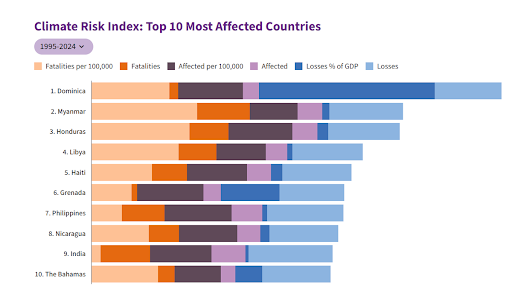
According to the Climate Risk Index (CRI) 2026 report by Germanwatch, in the last three decades:

Record-Breaking Temperatures
2024 was India's hottest year since 1901, with the annual mean temperature 0.65°C above the long-term average. This consistent warming trend increases the risk of more frequent, intense heatwaves.
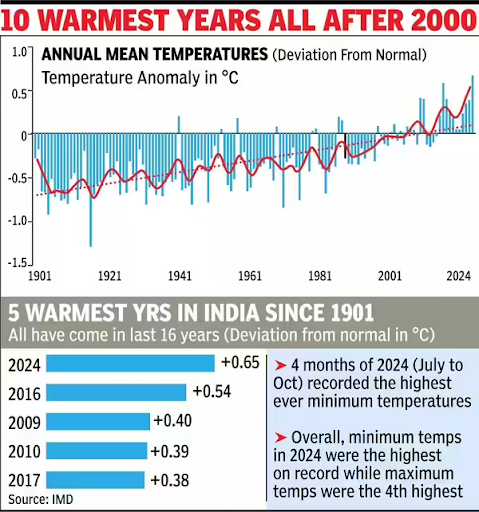
Increased Frequency of Extreme Weather Events
According to the Centre for Science and Environment (CSE), India recorded extreme weather events on 270 of the 273 days between January and September 2025.
Greenhouse Gas (GHG) Emissions Profile
India is the world's third-largest greenhouse gas emitter, after China and the U.S. Though its per capita emissions are low, rapid economic growth adds to global emissions.
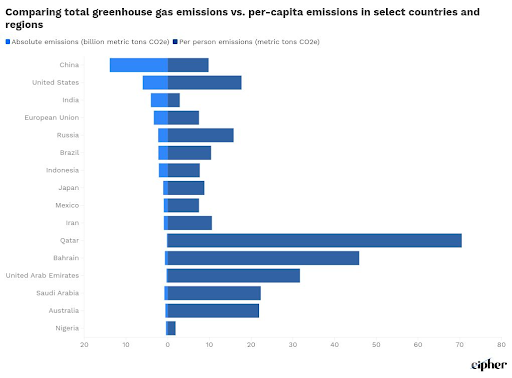
Agriculture and Food Security
Reduced Crop Yields: Without adaptation, Indian rainfed rice yields are projected to drop by 20% by 2050 and 47% by 2080. Irrigated rice yields are expected to fall by a lesser 3.5% by 2050 and 5% by 2080. (Source: PIB)
Erratic Monsoons: Disrupted rainfall patterns, with longer dry spells and intense downpours, threaten rain-fed agriculture, which constitutes over 50% of India's cultivated area.
Soil Degradation: Increased rainfall intensity is projected to accelerate soil erosion, with an estimated loss of 10 tonnes per hectare per year from croplands by 2050. (Source: ICAR)
Water Resources
Severe Water Stress: India supports 18% of the world's population with only 4% of freshwater resources.
Groundwater Depletion: As of the 2024 assessment by the Central Ground Water Board (CGWB), 751 out of a total of 6,746 administrative units (blocks, mandals, talukas) in India are classified as "over-exploited", with extraction exceeding recharge, threatening both drinking water supply and irrigation.

Glacier Melt: Rapid retreat of Himalayan glaciers, vital for North Indian rivers, heightens risks of glacial lake outburst flood (GLOF) and jeopardizes long-term water supply.
Human Health
Heat-Related Illnesses and Mortality: The National Centre for Disease Control (NCDC) reported 48,156 suspected heatstroke cases between March and July 2024.
Vector-Borne Diseases: Changing temperature and rainfall patterns are expanding the habitats of mosquitoes, leading to a higher risk of diseases like dengue and malaria.
Air Pollution: A Lancet report reveals human-caused PM2.5 pollution led to over 17 lakh deaths in India in 2022, a 38% rise since 2010.
Economic and Social Costs
GDP Loss: Economic losses from outdoor air pollution in 2022 were equivalent to 9.5% of India's GDP (Source: The Lancet, 2025).
Labour Productivity: Extreme heat leads to losses in potential labor hours, particularly in agriculture and construction, impacting livelihoods and economic output.
Internal Displacement: In 2024, India recorded 5.4 million internal displacements due to disasters like floods and storms, the highest figure in 12 years (Source: IDMC).
Poverty Exacerbation: Climate change disproportionately affects the poor, who rely on climate-sensitive sectors like agriculture. It threatens to push millions back into poverty.
National Action Plan on Climate Change (NAPCC)
Launched in 2008, the NAPCC provides the framework for climate policy. It comprises eight core missions targeting specific areas.
The responsibility for implementation is delegated to states, which develop their own State Action Plans on Climate Change (SAPCCs).
As part of the Paris Agreement, India has committed to ambitious targets, popularly known as "Panchamrit," to be achieved by 2030.
India has already achieved over 51% of its total installed power capacity from non-fossil fuel sources as of September 2025, meeting one of its key NDC targets well ahead of schedule.
Other Key Initiatives
High Dependence on Fossil Fuels: India continues to rely heavily on coal, which accounts for approximately 49% of Power Capacity. The government plans to add almost 90 GW of coal-fired capacity by 2032.
Insufficient Renewable Energy Capacity & Infrastructure: India's renewable energy capacity needs to rise to over 7,400 GW by 2070 to meet net-zero targets. (Source: CEEW)
Funding Gaps: The $300 billion annual finance target for climate adaptation by 2035 is insufficient compared to the estimated requirement of $5.1 to 6.8 trillion by 2030. (Source: PIB)
Data Gaps: Data available for the Global South may underestimate the actual occurrence and impact of extreme weather events.
Climate-Resilient Infrastructure: Invest in climate-proof infrastructure, such as the National Cyclone Risk Mitigation Project, and improve resilience of existing infrastructure.
Integrated Water Governance: Shift from fragmented, supply-driven approaches to integrated, basin-aware, data-rich, and ecosystem-rooted resilience in water management.
Early Warning Systems: Enhance early warning capabilities for extreme weather events.
Accelerated Green Transition:
Sustainable Agriculture: Adopt climate-resilient crop varieties, diversified cropping patterns, and improved soil health restoration.
Carbon Sequestration: Enhance carbon sinks through afforestation (e.g., Green India Mission) and sustainable agricultural practices.
Global Cooperation: Advocate for global ambition in emission reduction and effective solutions for loss and damage.
Health Adaptation: Establish 'Environmental Health Cells' in State Health Departments and develop multi-pronged approaches to address health impacts.
India must urgently integrate climate action with development goals to secure a sustainable future for 1.4 billion people. This involves closing the implementation gap, securing finance, and ensuring a just transition to a low-carbon, climate-resilient economy, all while tackling current climate impacts.
Source: DOWNTOEARTH
|
PRACTICE QUESTION Q. The 'Nansen Initiative' is associated with addressing the issue of: A) Statelessness and citizenship rights globally. B) Cross-border displacement due to climate change and disasters. C) The rights of internally displaced persons (IDPs) in conflict zones. D) Sustainable management of transboundary river basins. Answer: B Explanation: The Nansen Initiative was a state-led process to build a consensus on a protection agenda for people displaced across international borders because of natural disasters and the effects of climate change. It aimed to identify good practices and tools for protecting these individuals, as they fall outside the scope of traditional refugee law. |
India's key commitments, as part of its updated Nationally Determined Contributions (NDCs) or 'Panchamrit', include reducing the emissions intensity of its GDP by 45% by 2030 (from 2005 levels), achieving 50% of its electric power capacity from non-fossil fuel sources by 2030, and reaching a long-term goal of Net-Zero emissions by 2070.
A GLOF is a sudden and powerful flood that occurs when a dam containing a glacial lake fails. As global temperatures rise, Himalayan glaciers are melting faster, forming larger and more unstable glacial lakes. The devastating 2023 flood in Sikkim, caused by the outburst of the South Lhonak lake, highlights the increasing risk of GLOFs to life and infrastructure in Himalayan states.
India faces several key challenges: securing adequate climate finance for mitigation and adaptation projects, gaining access to affordable advanced green technologies, ensuring effective coordination between the central, state, and local governments, and balancing the urgent need for economic development with the goal of decarbonizing the economy.

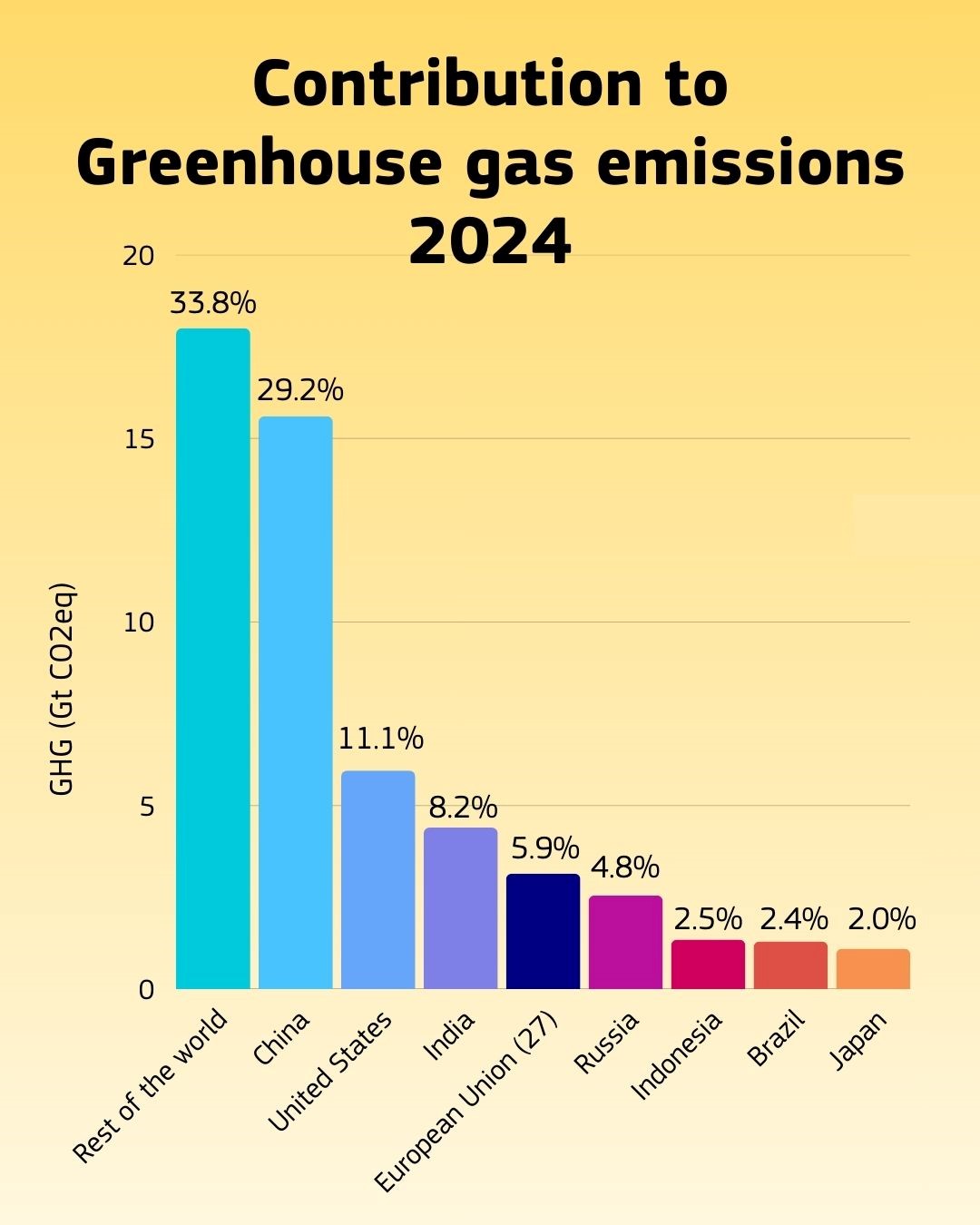

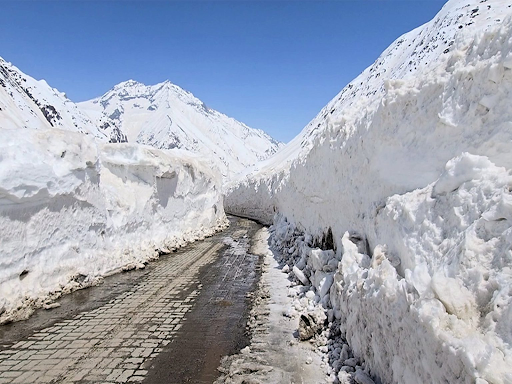
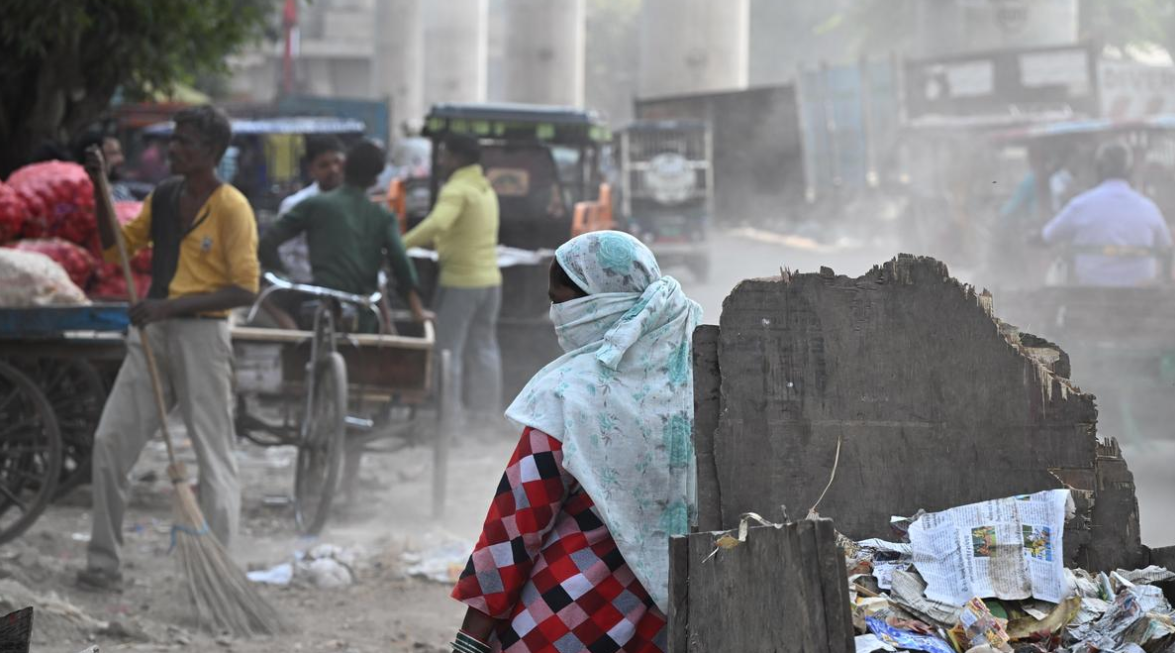

© 2025 iasgyan. All right reserved